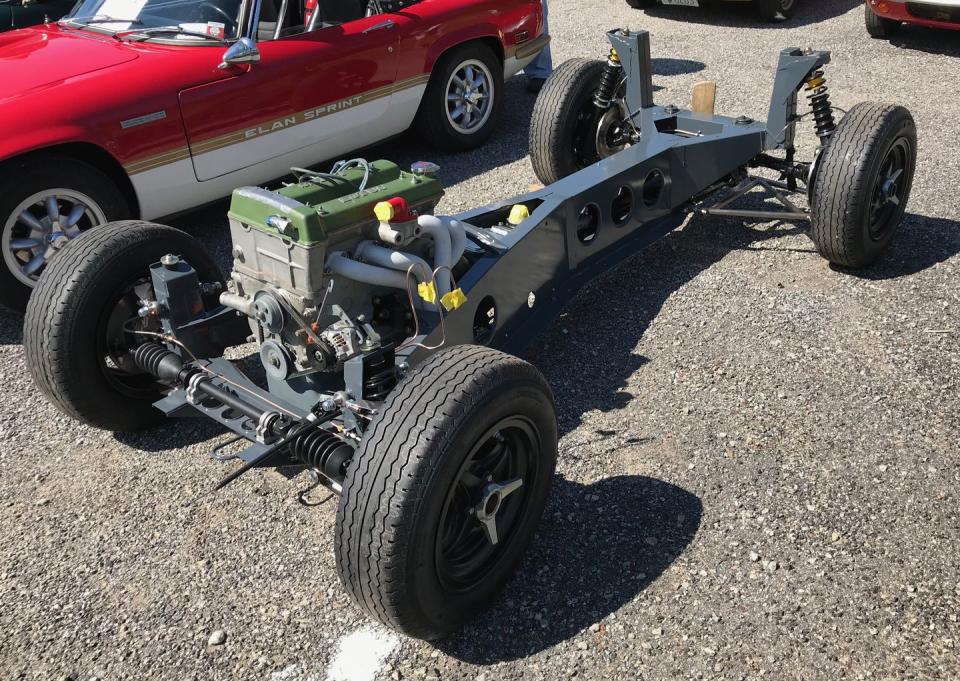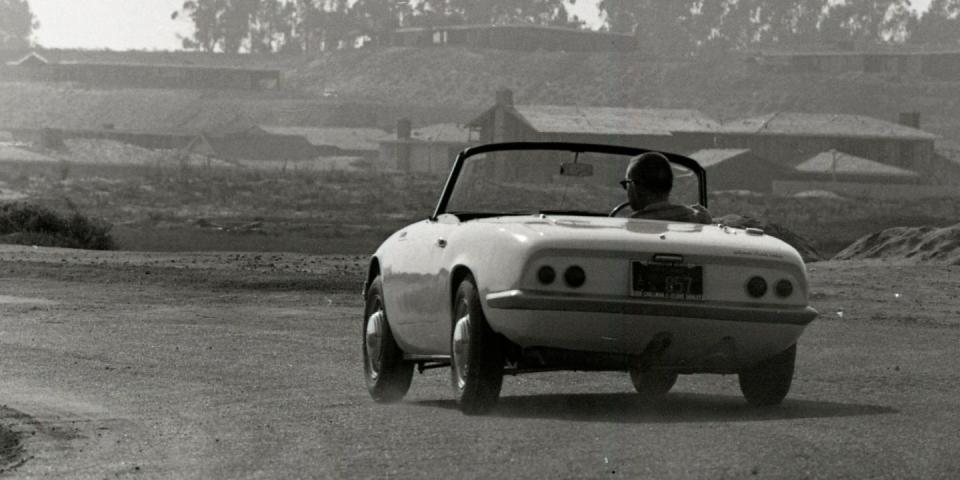The Lotus Elan Turns 60

This week, the Lotus Elan turned 60 years old. There wasn't a ton of fanfare. Just a press release from Lotus, and not much else. Strange, given that the Elan is one of the greatest sports cars ever made.
The Elan was a revelation. Debuting at Earl's Court on October 17th, 1962 (though shown in magazines a week earlier), the Elan represented a radical departure for sports-car design. Unibody cars began to grow in popularity even before the War, but most sports cars in the immediate post-War era still used a traditional ladder chassis. The Elan used a simple steel backbone chassis running down the spine of the car, to which the fiberglass body, suspension, engine and driveline were bolted. The resulting car was very stiff and incredibly light, Lotus saying the very earliest Elans weighed just 1411 pounds. Even the later, more luxurious models, aside from the larger +2, never eclipsed 1600 pounds. The ladder-frame MG B, which debuted the same year, weighed over 2000 pounds. Today, the lightest sports car on sale is the 2341-pound Mazda Miata, while most weigh well over 3000 pounds.
This was a time of experimentation. As the world emerged from the shadow of the War, automakers seemed to make up for lost time, radically evolving the automobile. Lotus quickly moved from making a car based on the then-ancient Austin 7, to building some of the world's finest street cars.
Lotus founder Colin Chapman intended the Elan as a successor of sorts to the Elite, the company's first production street car. The Elite was a fatally flawed innovator. Its fiberglass body was the chassis itself—not unlike a carbon-monocoque supercar today—to which a steel subframe containing the engine, transmission and front suspension was bonded. Like the Elan, the Elite was light and stiff, but fragile. Worse for Lotus, it was ruinously expensive to make. The company lost money on every single one.

With the Elan, Chapman and Lotus took the ethos that defined the Elite and applied it to a car that would be easier to make. The original thought was to use a monocoque chassis like the Elite, but Chapman and designer Ron Hickman accidentally hit on a brilliant idea. Chapman bult a simple steel frame to test out the new driveline of the Elan while Hickman worked on the chassis. The frame weighed around 75 pounds and was twice as stiff as the Elite's monocoque, so why not make that the chassis? This meant the bodywork could be simple and light because it wasn't needed to provide structural rigidity. It would also be less delicate than the Elite and far cheaper to build.
Also cheaper was Lotus's new engine. The Elite used the Coventry Climax four-cylinder, an all-alloy unit originally designed for water pumps. The Coventry Climax was built in small numbers, and Chapman thought that Lotus could save money by using an engine based on something built in higher volumes, so it worked with Ford to develop a new twin-cam four. The basis was Ford's recently introduced iron-block Kent engine, which was fit with a twin-cam head designed by Chapman's friend and former Coventry Climax engineer, Harry Mundy. Lotus would use the engine in the Elan (initially in 1500cc form, but displacement was soon bumped to 1558 cc form) while Ford would get it in the Lotus-tuned Cortina sedan. Fed by Weber DCOE carbs, it made 105 horsepower in its earliest iterations. The contemporary Porsche 356 B 1600 Super has to make due with just 88 hp.

Suspension was by double wishbones in front and struts in the rear, with unusually soft springing all around. In what is now seen as a hallmark for both Lotus and English cars in general, the Elan works on the radical notion that a sports car can be comfortable and have excellent handling. In fact, a soft suspension helps a car handle better on England's crappy roads, and here in the States too. Use of soft suspension was enabled by the backbone chassis. Ladder-frame sports cars had to be stiff to keep all four tires on the road, but the stiffness of the Elan's chassis allowed Lotus to fit much softer suspension and achieve the same thing.
It was the right combination of ingredients, executed to perfection. Low weight plus good power from the Ford-Lotus Twin Cam made the Elan something of a giant-killer. Our 1964 road test of an Elan resulted in an 8.5-second 0-60 mph time. A 1962 Jaguar E-Type, despite having more than double the horsepower, was only 1.1 seconds faster in the same metric.
But, the Elan is not a numbers car. It's a sports car pared back to its essence, and it offers a driving experience unlike anything else. The suspension is tuned to perfection, offering a ride-handling balance that remains a benchmark for all cars. The Elan also sets the standard for steering feel, telling the driver about everything happening at the road surface through a thin-rimmed wood wheel. It's quick, too, even by modern standards. That twin-cam four-cylinder has an edge to it, and it's controlled by the most delightfully precise four-speed shifter you'll ever encounter. Drive a good example, and you'll realize why it's so revered.
Lotus sold 17,392 examples over the course of 11 years. There were four main versions of the two-seat Elan (S1, S2, S3, S4), and it was offered as both a convertible and a coupe. Lotus added a +2 version in 1967, which ran until 1975, when it was replaced by an even larger shooting brake wearing the Elite name. When you consider that Lotus only built its 100,000th car in 2018, the importance of the Elan becomes obvious.
Values for the Elan are on the rise, but they've never seen the monster gains of other Sixties sports cars like the E-Type, Porsche 911, and others. I posit this is down to the Elan's reputation for fragility. They're finicky cars despite their relative simplicity, and neglected examples can be difficult to put right. Then, there's the size. In their day, Elans were considered quite small, and today, they're tiny, dwarfed even by a Mazda Miata, a car it inspired. A lot of people simply don't fit, and even this writer, despite wearing a size 9 shoe, has to drive barefoot in an Elan. You also can't help but worry about your own safety, given the bodywork surrounding you is just clothing.

There is an absurdity to the Elan, too. The hood, for example, has no hinges. Pop the bonnet release under the dashboard, rock the hood forward, and lift it off. It only weighs a few pounds, so it's not difficult to remove, and of course, ditching hinges saves money and weight (apparently two of Colin Chapman's favorite things). It's both brilliant, and it makes you say, “Really?” in bemusement at the same time.
It's things like this that give the Elan more of a kit car feel than other Sixties sports cars and indeed, Lotus actually sold them as kits in the U.K. I can sort of understand why people put a premium on old 911s especially—they're just more usable, even today. Still, nothing will make you feel like an Elan does. The driving experience is old-school, but not antique. The way it goes down a road embarasses a lot of modern cars. It's hard to believe it's a 60 year old design, sometimes.

The Elan isn't for everyone, and that's what makes it great. One of the greatest of all time, in fact. For 60 years, Road & Track has rhapsodized about Lotus' little sports car. I don't suspect we'll stop anytime soon.
You Might Also Like

 Yahoo Autos
Yahoo Autos 